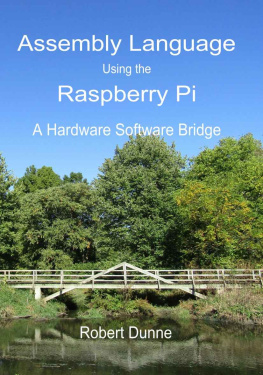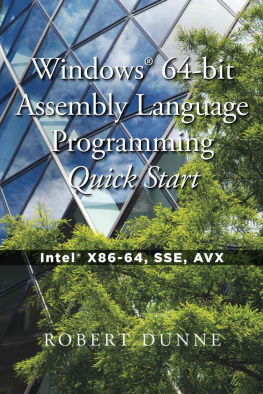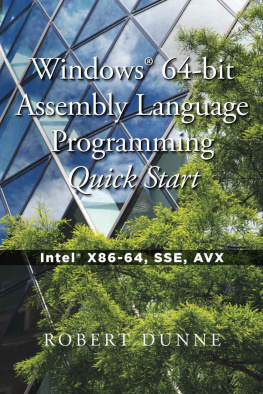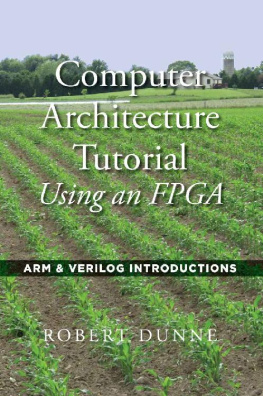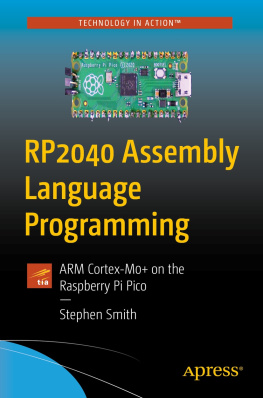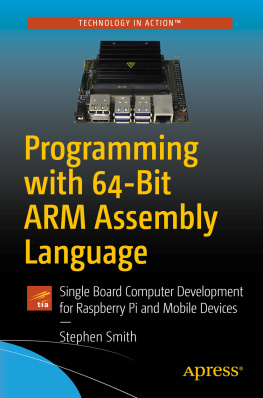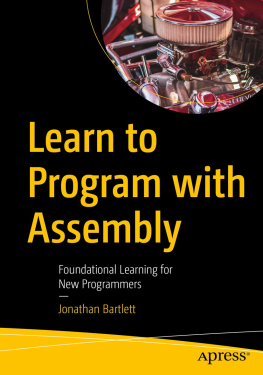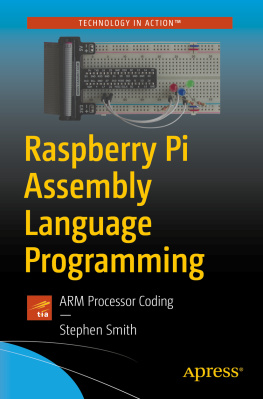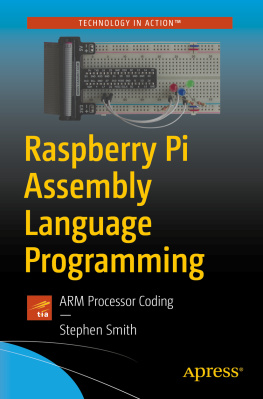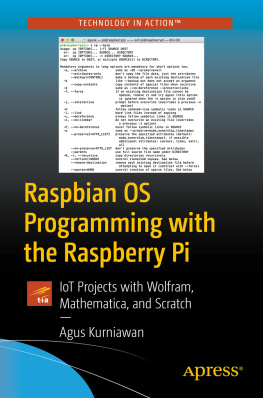Robert Dunne - Assembly Language Using the Raspberry Pi: A Hardware Software Bridge
Here you can read online Robert Dunne - Assembly Language Using the Raspberry Pi: A Hardware Software Bridge full text of the book (entire story) in english for free. Download pdf and epub, get meaning, cover and reviews about this ebook. year: 2017, publisher: Gaul Communications, genre: Home and family. Description of the work, (preface) as well as reviews are available. Best literature library LitArk.com created for fans of good reading and offers a wide selection of genres:
Romance novel
Science fiction
Adventure
Detective
Science
History
Home and family
Prose
Art
Politics
Computer
Non-fiction
Religion
Business
Children
Humor
Choose a favorite category and find really read worthwhile books. Enjoy immersion in the world of imagination, feel the emotions of the characters or learn something new for yourself, make an fascinating discovery.
- Book:Assembly Language Using the Raspberry Pi: A Hardware Software Bridge
- Author:
- Publisher:Gaul Communications
- Genre:
- Year:2017
- Rating:4 / 5
- Favourites:Add to favourites
- Your mark:
Assembly Language Using the Raspberry Pi: A Hardware Software Bridge: summary, description and annotation
We offer to read an annotation, description, summary or preface (depends on what the author of the book "Assembly Language Using the Raspberry Pi: A Hardware Software Bridge" wrote himself). If you haven't found the necessary information about the book — write in the comments, we will try to find it.
Programmers learn by example and develop their skills by examining and modifying working programs. Assembly Language Using the Raspberry Pi is a complete tutorial that provides working example programs to introduce the novice to both CPU hardware and professional software development methods.
- Each of the 20 chapters begins with a complete sample program to examine and test, followed by a description explaining the programming techniques and instructions that are introduced.
- The first program is only 5 lines of code while later ones consist of over 100 lines.
- Every sample program is complete, but leaves room for enhancements and experimentation encouraged by the questions at the end of each chapter.
- ARM processor instructions and features are introduced as needed to implement the increased complexity in programming techniques.
- There is an emphasis on program structure and design patterns that facilitate developing maintainable code (i.e., no spaghetti code).
- The sample programs are documented both in flow diagrams and in comments.
- Over 100 illustrations are included to explain programming techniques as well as ARM and floating point instructions.
- Floating point format and instructions are covered extensively, but gradually introduced through a series of seven chapters covering IEEE 754, VFPv3, and NEON.
- Background material on subjects like binary, twos complement, and hexadecimal appear in fourteen appendices for those who need it, without getting in the way of programmers who dont.
- This book has been classroom tested with students having very little if any previous programming experience. The information is complete, allowing it to also be used as an independent study.
- All system and utility software used in the book is included in the standard Raspian Linux distribution intended to be used with the Raspberry Pi 2 and 3.
Assembly language is the computer programming language closest to a computers machine code language. Learning to program in assembly language is an excellent practical hands-on introduction to the details of computer architecture. Although applications and systems software written in assembly language were once common, assembly language is now primarily a bridge of understanding between computer architects and software developers.
Robert Dunne: author's other books
Who wrote Assembly Language Using the Raspberry Pi: A Hardware Software Bridge? Find out the surname, the name of the author of the book and a list of all author's works by series.

